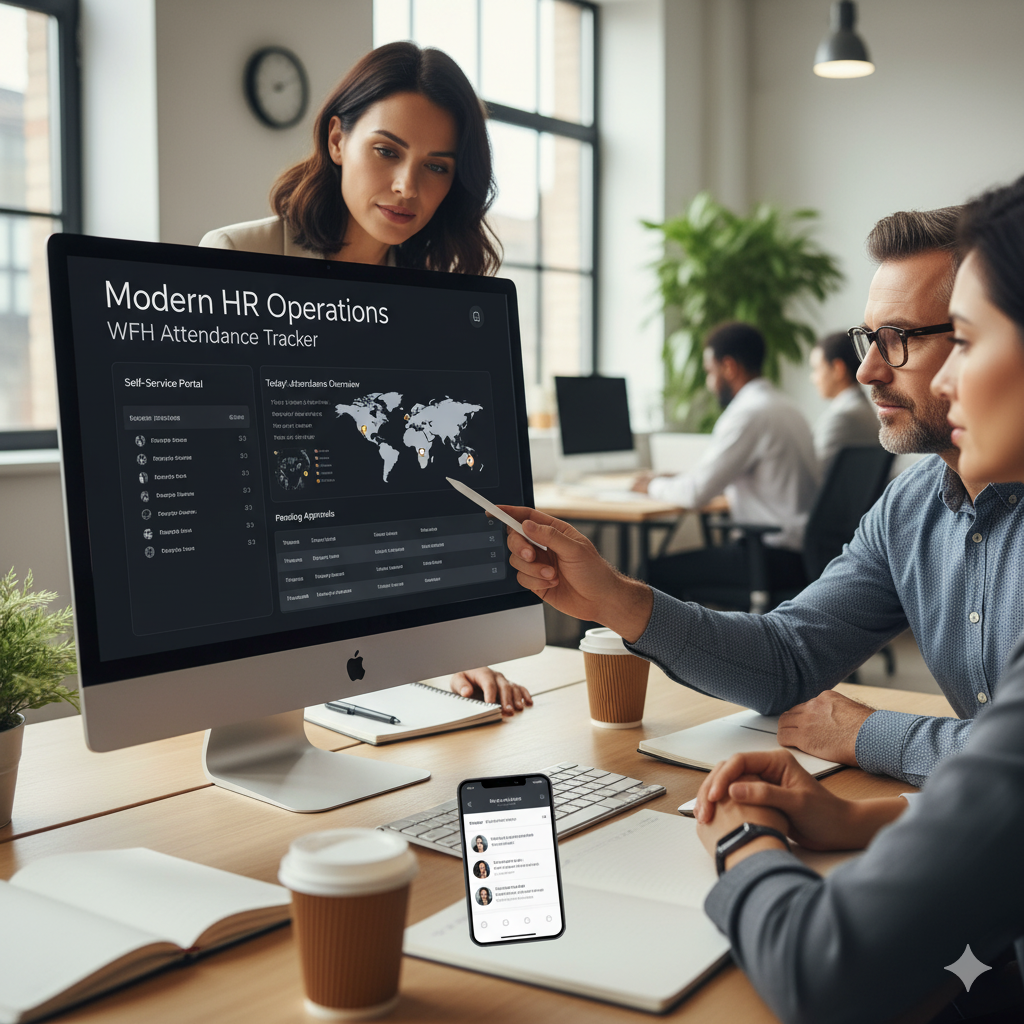Address
Kaypian, San Jose Del Monte City, Bulacan Philippines
Work Hours
Monday to Friday: 8AM - 6PM
Weekend: 10AM - 5PM
Address
Kaypian, San Jose Del Monte City, Bulacan Philippines
Work Hours
Monday to Friday: 8AM - 6PM
Weekend: 10AM - 5PM


Integrated HR. Accurate Payroll.


Integrated HR. Accurate Payroll.

In today’s hybrid and remote work era, one of the biggest challenges HR teams face is accurately tracking employee attendance — especially for those working from home (WFH).
Traditional attendance systems were designed for in-office environments, relying on physical logs or biometric scans. But with employees logging in remotely, HR departments need smarter, cloud-based solutions that provide accuracy, transparency, and flexibility.
That’s where HRIS (Human Resource Information System) with Self-Service WFH In/Out filing comes in.
In this article, we’ll explore how HRIS simplifies remote attendance tracking, boosts employee accountability, and empowers HR teams with real-time insights — all through self-service automation.
Remote work introduced convenience and flexibility, but it also brought new HR challenges:
🏠 Difficulty verifying work hours for remote employees.
🕒 Inconsistent time logs or manual reporting.
📧 Delayed updates due to email-based attendance reports.
⚠️ Lack of visibility for managers on daily attendance status.
Without a centralized system, HR teams struggle to maintain accurate attendance data, leading to payroll errors, compliance issues, and reduced productivity tracking.
That’s why HRIS Self-Service portals have become essential for modern workforce management.
Self-Service WFH Filing in HRIS allows employees to log their Work From Home (In/Out) attendance online through a web-based or mobile platform.
Instead of manual forms or chat-based reporting, employees simply file:
All entries are automatically recorded in the HRIS database, giving HR and management a real-time view of attendance patterns across remote staff.
Here’s how an HRIS streamlines remote attendance management:
Implementing WFH attendance tracking in HRIS offers both operational efficiency and strategic advantages:
Let’s imagine how it works in a real scenario:
8:00 AM: Employee opens the HRIS portal and clicks “WFH Time In.”
12:00 PM: Takes a lunch break, logging out temporarily.
1:00 PM: Logs back in to continue work.
5:00 PM: Clicks “WFH Time Out.”
Managers can then view reports, approve attendance, and sync with payroll — all from one platform.
Modern HRIS platforms include analytic graphs and dashboards that provide insights into WFH trends.
For example, HR can quickly identify:
By analyzing this data, HR can make data-driven decisions on scheduling, productivity, and workload distribution.
To maximize efficiency, HR departments should:
These steps help HR maintain a transparent, efficient, and compliant remote attendance ecosystem.
Remote work is here to stay — and HR needs the right tools to manage it effectively.
With HRIS Self-Service WFH In/Out filing, HR departments can track attendance accurately, empower employees with self-management tools, and gain real-time insights into remote workforce productivity.
It’s not just about automation — it’s about transforming HR operations into a smarter, data-driven process that aligns with the modern digital workplace.
If your organization hasn’t upgraded to a self-service HRIS yet, now is the time to embrace the future of attendance management.